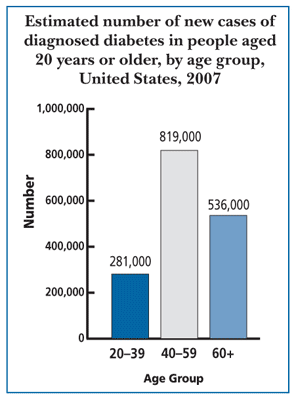The body does need some fats, and the “good fats” in olive oil and fish are much more easily broken down and utilized by the body instead of the saturated fats, which instead of being broken down, may be allocated to fat storage, and add inches to the waistline and pounds to your physique.
Increasing your waistline does not just hinder your look in a swimsuit, but is commonly acknowledged as a detriment to your health. Overweight and obese individuals have an increased risk of developing some serious complications which include heart disease, high blood pressure, arthritis and diabetes.

What you may not know is that that battling the bulge lowers your propensity to develop serious health consequences due to weight. For those suffering from diabetes, or at a high risk of developing diabetes, every tool is important to combat this growing threat.
Another tool in this arsenal is surprisingly common: nuts. That’s right; you can munch your way to a lower glycemic index and control diabetes all while snacking on some peanuts.

A new study conducted by researchers at the University of Toronto produced findings that support that nuts may be a vital way to manage diabetes. Results show that nuts may improve blood lipid levels and blood sugar levels in individuals with non-insulin dependent diabetes (type 2 diabetes).
The goal of this study was to determine if by added nuts to a diet could improve glycemic control in patients with type 2 diabetes. Glycemic control was assessed by blood sugar levels (shown by HbA1c levels). Researchers also evaluated if these outcomes related to improvements in cardiovascular health.
The study was conducted over a three month period and tested 117 participants currently being treated with oral hypoglycemic medications to treat their type 2 diabetes. The participants were randomized and split into three groups and given one of three diet options. The diets included a supplement with either a ½ cup of mixed nuts, mixed nuts and muffins or all muffins. The calorie content for each supplement was the same, around 450, but the mixed nuts have more unsaturated fats and fewer carbohydrates than the other two supplements with muffins.
Study findings showed that the group given the supplement with all mixed nuts had a significantly reduced LDL (bad cholesterol) and total cholesterol levels compared to the full dose muffin group. Additionally, there was also a significant reduction in HbA1c levels in participants with full dose mixed nut supplement than the other two diets. This indicates a greater glycemic control and higher degree of effectively managing diabetes.
"This is the largest study done to date looking at the effect of tree nuts (almonds, Brazils, cashews, hazelnuts, pecans, pine nuts, pistachios, macadamias and walnuts) and peanuts on Type 2 diabetes,” says Cyril Kendall, Ph.D., of the University of Toronto. “If improvements in glycemic control can be achieved by dietary changes, this would make a substantial contribution to the treatment of those with Type 2 diabetes.”In 2003, the FDA qualified that eating 1.5 ounces of nuts may help reduce the risk of heart disease, if added to a low fat and cholesterol diet. However, patients with type 2 diabetes have a much higher risk of developing heart disease than non-diabetic individuals. It begs the question that since the two are somewhat related in consequence, could the prevention be similar as well? Initial results seem to support this idea. Perhaps skipping your morning bagel and reaching for the walnuts instead could be a small step to bolster your health.






Comments